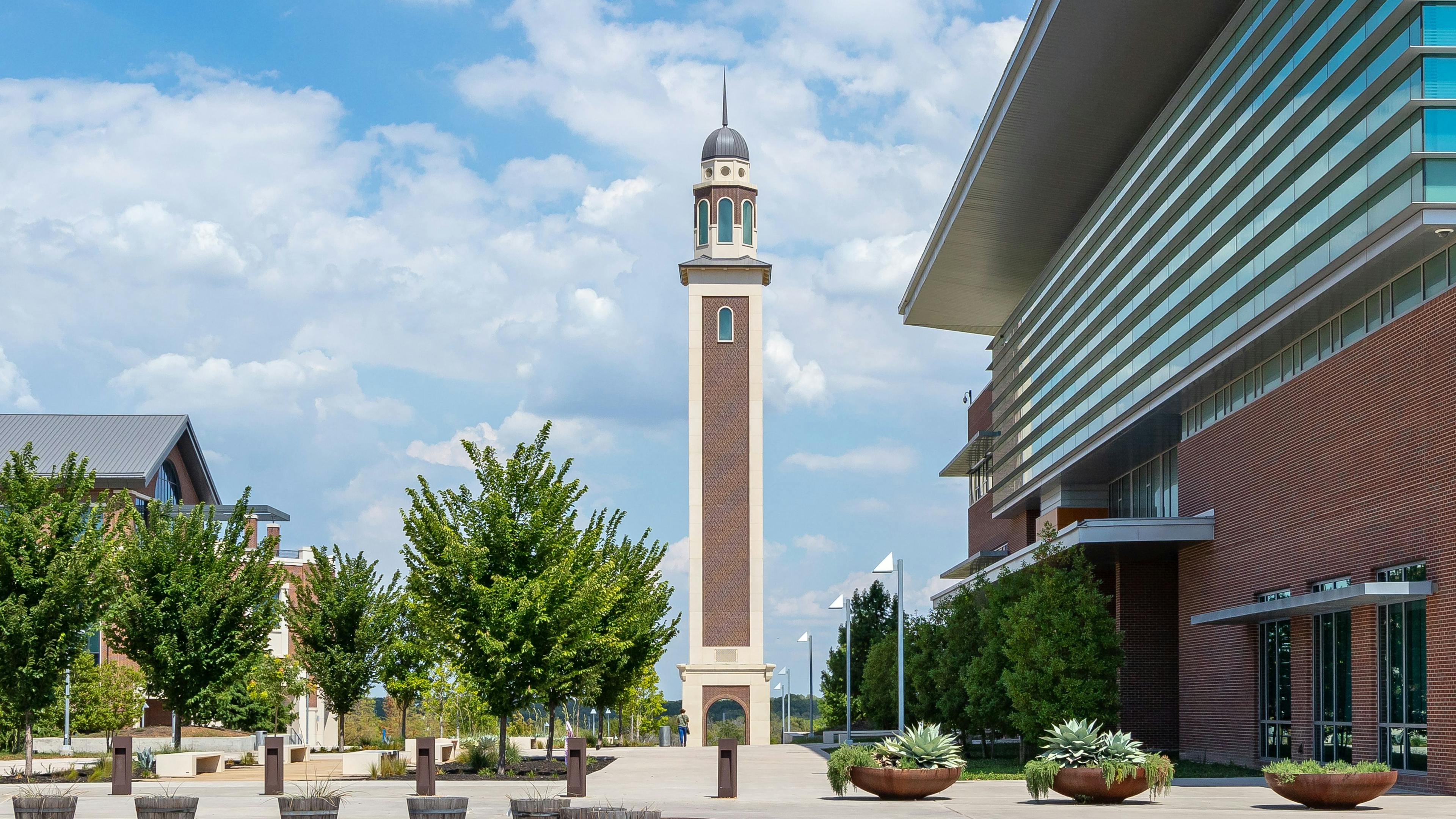
Back in Session
After years of stagnation, construction of K-12 schools is finally ramping back up in many districts across the country. In fact, institutional construction is expected to increase 10 percent this year to $118.5 billion, according to Dodge Data and Analytics’ 2017 Dodge Construction Outlook. This number largely is driven by the education sector, which comprises more than 40 percent of the institutional market.
In 2017, the dollar value of construction starts in the education sector is expected to increase 10 percent from 2016 to $53.1 billion, according to the report—driven by recent school bond legislation that’s leading to an increase in new construction, as well as renovations of outdated school buildings. Though still less than the market’s peak in 2001, this is good news for contractors specializing in K-12 construction.
But the work isn’t easy. With high demand for new and renovated classroom space by school districts around the country to replace old, outdated facilities, contractors must be experts at completing projects under tight timelines. For school districts undertaking renovation projects, contractors must hit the ground running as soon as the bell rings for summer break to ensure successful completion before the first day of class in the fall. This leaves very little room for error and requires exceptional problem-solving and teamwork skills.
OPTIMUM ORGANIZATION
The successful delivery of K-12 educational projects is something Spartanburg, S.C.-based Waldrop Mechanical Services knows all too well. With approximately 20 years and nearly $80 million worth of HVAC and plumbing experience in the market, the company is an expert on the subject and has developed a niche market by successfully completing renovation projects as the prime contractor. The firm also works as a subcontractor with selected general contractors on new school construction projects. In early 2016, Waldrop Mechanical Services was contracted to complete an HVAC renovation on the Walhalla Elementary School in Oconee County, S.C. Work was initially scheduled to be completed during summer break in 2017, but that plan changed when the existing chiller failed in April 2016. Instead of performing the work the following year, the district decided to take on an emergency procurement to perform the entire renovation project during the 2016 summer break.
That left just five weeks for preparation, planning and design before students left for the summer and construction began, and provided only eight weeks to complete the construction phase of the project by the Aug. 8 deadline. Waldrop Mechanical Services stepped up to the plate, working in a design-assist model with the school district, architect and design team to come up with a project execution plan.
“These kinds of jobs are always challenging, difficult and tend to attract only a select few contractors that are willing to take on such risks because work has to be done in 90 days during the summer,” says Bill Caldwell, president and CEO of Waldrop Mechanical Services. “There’s tremendous potential for late completion. These types of projects are not for the ‘light of heart.’”
To get a jumpstart, Waldrop Mechanical Services began construction two weeks prior to the design being finalized, which required close collaboration with the team
To ensure the project was completed on time, Waldrop Mechanical Services quickly implemented a 60-hour construction workweek. The company used an incentive program to encourage all employees to live up to productivity expectations. Waldrop informed project foremen and superintendents about the estimated labor costs, and challenged them to encourage the team to complete the job within that estimate. If they stayed within budget, the company promised to reward the entire team with a bonus consisting of savings from completing the labor according to the estimate.
This program also increases safety on the job. If employees have a safety violation that was within their control, they forfeit the opportunity for a bonus at the end of the project. Essentially, the program motivates employees to get the job done quickly and safely.
“Our employees would rather work on these projects because of the opportunity to enhance their earnings with both the required overtime and the potential for a bonus incentive,” Caldwell says.
Ensuring employees are productive is just a portion of meeting tight timelines. Making sure all materials and equipment are delivered on time is key as well, and one that has a high potential to slow down a project. Normally, Waldrop Mechanical Services is awarded a job four months ahead of schedule. But because of the unexpected chiller failure at the elementary school, the company had to step in only a month before construction began. This required expediting the process of getting all materials and long-lead-time equipment to the jobsite so they were ready to install from the beginning. To make sure this happened, Waldrop Mechanical Services worked with a few trusted vendors.
“We have a group of vendors that work with us on these schedule-driven projects, and they all need to buy into the project during planning,” Caldwell says. “It’s a totally integrated approach to project delivery, and the subcontractors and materials and equipment providers have to live up to their commitments. Everyone has to be on board, make decisions and follow through with those plans, which takes true teamwork.”
By working closely with the owner, architect and design team, Waldrop Mechanical Services was able to complete the project a week ahead of schedule, providing extra time for the school to move in and prepare for the coming year.
EMPHASIS ON EFFICIENCY
Collaboration and efficiency were key components in the successful completion of the George Washington Carver High School in New Orleans’ Upper Ninth Ward. The original school was destroyed by Hurricane Katrina, and Broadmoor, LLC began construction on a new school in June 2014, providing a much-needed educational facility to the recovering neighborhood.
Using the design-build method, Broadmoor relied on its in-house design team and a local architect to build the replacement school as efficiently as possible.
“Almost every project gets down to time and money, so those two factors end up being critical to the decision-making process. When documents are finished, that’s when there’s the least opportunity to influence outcomes related to time and money,” says Broadmoor President Ryan Mouledous.“From a constructability standpoint, being at the table with the architect and other team members allows us to think of the project as a unit.”
The company relies on lean construction techniques to make sure all projects, including the high school, run according to schedule and within budget. This includes putting the right people, who collectively have hundreds of years of construction experience, on a jobsite together—allowing the team to draw from the best expert opinions the company has to offer and to collectively create plans and solve problems.
“In other methods, teams get put together in a non-selective manner, which creates a shotgun marriage. There is a tendency for relationships to start off in a defensive manner. Lean does the opposite of that,” Mouledous says.
Broadmoor also uses BIM to visualize construction before it actually begins. This allows the company to fabricate many materials offsite, including precast panels with brick inlay used on the high school’s skin, which were built offsite in a controlled environment—saving time and costs compared to traditional masonry. The integrated MEP rack system also was fabricated offsite, which allowed the critical systems to be coordinated before the rack system was installed.
“If someone has a set of fabrication drawings extracted from the model, they can view them from remote locations at any height, instead of requiring an employee to be on scaffolding,” Mouledous says. “The quality of work elevates, and the likelihood of people going home safely elevates.”
The company uses Bluebeam technology in the field so superintendents can access live updated drawings on the jobsite. That saves time and increases productivity because superintendents don’t need to run back to the trailer to view plans, and can be sure they are viewing the most up-to-date drawings at all times.
Using Bluebeam was particularly helpful at the beginning of the project. To meet the demanding schedule, Broadmoor began working on the foundation prior to receiving the full building permit. The construction and design teams needed to work closely together to ensure all documents were up to date and received by all parties in real time. Broadmoor set up a Bluebeam station on the jobsite, where employees could view or print drawings and submittals. All major superintendents also could access the drawings from iPads in the field.
Their hard work paid off. Broadmoor reached substantial completion in May 2016, providing plenty of time for the school district to move in and prepare for the following school year.
Now that the overall construction industry is finally picking back up, many districts are prioritizing fixing up neglected schools or building new, state-of-the-art facilities. The future is looking bright for contractors experienced in the market that have top-notch operational efficiency to meet tight timelines.
A COMMUNITY EFFORT
Some districts are rethinking traditional school models. In Orange County, Fla., some schools are adding components to provide services for the community and are being funded by generous donations from philanthropists.
Williams Company Building Division recently focused on such a project. The 235,000-square-foot, three-story PS8 School in Orlando, Fla., sits on 14 acres and includes an 84,000-square-foot, three-level parking garage. In addition to classroom space, the school offers a full-size track and soccer and football fields, which will be available for use by sports teams in the community when the facility opens this fall.
Beyond educational facilities for its 1,211 students, the school will include a health clinic open to students, their parents and community members, a child care center, a gym for students and another gym for the Boys and Girls Club.
These facilities largely are thanks to donors, especially the Harris Rosen Foundation, which funded the preschool wing that will include 24 classrooms to accommodate up to 288 children. The foundation also will fund teachers’ salaries. In addition, students who attend the new elementary and middle school and go on to graduate from a nearby high school, will receive free tuition to a two- or four-year college or vocational school—including meals, books and transportation—thanks to the foundation.
“Orange County is hoping it becomes a model for how to include the community into school systems,” says Bob Lipscomb, CEO of Williams Company Building Division. “Once it’s up and running, the hope is it will become a national showcase for helping the community build good citizens.”
PS8 is just one of many schools being constructed in the Orange County area. In fact, the district is planning $1 billion worth of school projects in the next three years—including 13 schools scheduled to open this year, and 14 scheduled to open in 2018 and 2019.
Williams Company Building Division is fortunate to have a piece of that pie. The company will wrap up PS8 and Rock Lake Elementary in 2017, Lake Komo K-8 and Frangus Elementary in 2018 and Pershing/Pine Castle K-8 in 2019.
Jessica Porter is a New-York based freelance writer and contributing editor to CE This Week.
Related stories








